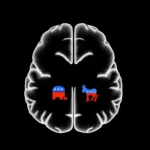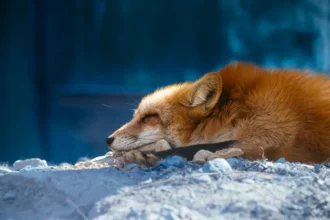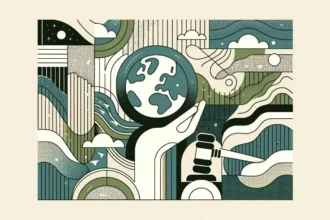The One Rights Paradigm
The concept of “One Rights” represents a pivotal shift in the understanding and implementation of fundamental rights, integrating the rights of humans and animals into a unified framework. Traditionally, human rights have been seen as exclusive to humans, but growing ethical and practical considerations suggest that these rights can and should be extended to animals. This extension is essential, driven by the interconnected nature of our world, especially in the Anthropocene—a geological epoch where human activity has become the dominant influence on climate and the environment.
Recognizing the indivisibility and interdependence of human and animal rights challenges the conventional boundaries that have historically separated them. This holistic approach acknowledges how the well-being of humans and animals is intrinsically linked. By adopting One Rights, we move towards a more inclusive and comprehensive understanding of justice that transcends species barriers.
The convergence of these naturalistic and political justifications forms a robust foundation for the One Rights paradigm.
This article will explore the synthesis of naturalistic and political justifications for integrating human and animal rights, demonstrating how these approaches collectively support the One Rights paradigm. It will define what One Rights entails, highlighting its conceptual framework and practical implications. I will examine how existing human rights can be extended to animals, considering the shared experiences and needs that justify this extension. Furthermore, we will explore how this integration redefines our understanding of rights in the Anthropocene, addressing the global challenges we face today.
By the end of this discussion, it will be evident that the One Rights paradigm offers a transformative approach to justice, fostering a more equitable and compassionate world for all sentient beings. This holistic perspective not only enhances protections for animals but also strengthens the framework of human rights, promoting sustainability and resilience in our shared planetary home.
Naturalistic and Political Foundations
The philosophical landscape of human rights features a great diversity of naturalistic and political approaches that offer various foundational and practical justifications. Naturalistic conceptions focus on the inherent qualities of beings, arguing that both humans and animals possess intrinsic value and moral status. These approaches emphasize that rights arise from natural attributes, such as sentience and the capacity to suffer. For example, the argument that animals, like humans, experience pain and pleasure suggest they deserve certain protections based on these shared qualities.
One Rights asserts that the core meaning of fundamental rights applies equally to humans and animals.
On the other hand, political conceptions stress the practical and historical contexts in which rights are developed and exercised. These approaches argue that rights are tools for addressing societal injustices and protecting vulnerable beings.
Political justifications do not dwell on the nature of rights holders but rather on the roles that rights play within societies.
They highlight how rights have evolved to meet historical injustices and how extending rights to animals can address contemporary issues of exploitation and environmental degradation.
The convergence of these naturalistic and political justifications forms a robust foundation for the One Rights paradigm. By integrating the intrinsic moral worth recognized by naturalistic theories with the functional necessity emphasized by political theories, One Rights offers a comprehensive framework.
This approach demonstrates that ethical imperatives and practical necessities collectively support the extension of rights across species barriers.
A key element of this synthesis is the recognition of the interdependence between human and animal rights. The exploitation of animals often parallels and reinforces injustices against humans, suggesting that protecting animal rights can also strengthen human rights. For instance, industrial farming practices that harm animals also contribute to environmental degradation, which, in turn, affects human health and rights. Therefore, a unified approach to rights that includes both humans and animals can address these interconnected issues more effectively.
The synthesis of naturalistic and political justifications underscores the conceptual and practical interdependence of human and animal rights. This interdependence supports the One Rights paradigm, advocating for a holistic approach to justice that benefits all sentient beings.
Defining One Rights
One Rights is built on the principle that the well-being of humans and animals is intrinsically linked. This paradigm shift challenges the traditional boundaries that have separated human rights from animal rights, proposing a holistic approach that acknowledges and addresses the interconnected nature of our world. The concept emphasizes that rights should not be exclusive to humans but should extend to all sentient beings capable of experiencing suffering and pleasure.
One of the primary human rights that can be extended to animals is the right to life.
The integration of human and animal rights under the One Rights framework highlights the shared experiences and needs that justify this extension. For example, both humans and animals have an interest in avoiding pain and living free from unnecessary harm. By recognizing these commonalities, One Rights provides a foundation for extending protections traditionally reserved for humans to animals.
This approach also addresses the practical implications of such an integration. By adopting One Rights, societies can develop legal and institutional frameworks that reflect the interconnectedness of human and animal welfare. This involves adapting existing human rights laws to include animals, ensuring that protections are appropriate for different species’ specific conditions and needs.
Human Rights as Animal Rights
The One Rights paradigm proposes that certain human rights can be extended to animals based on shared experiences and needs. This extension is grounded in the recognition that both humans and animals possess intrinsic value and deserve protection from harm. By adapting existing human rights frameworks, societies can ensure that animals are afforded similar protections that reflect their specific conditions and needs.

One of the primary human rights that can be extended to animals is the right to life. Animals, like humans, have an inherent interest in living and thriving. Extending the right to life to animals means recognizing their right to exist without being subjected to unnecessary killing or exploitation. This involves rethinking practices such as factory farming, hunting, and animal testing, where animals are often treated as mere commodities rather than sentient beings with a right to life.
The right to liberty is another fundamental human right that can be extended to animals.
Similarly, the right to bodily integrity can be applied to animals. This right protects individuals from physical harm and invasive procedures without consent.
For animals, this translates to protection from cruel and inhumane treatment, including practices that cause pain, suffering, or mutilation.
Ensuring animals’ bodily integrity means advocating for humane treatment and abolishing practices that inflict unnecessary suffering.
The right to liberty is another fundamental human right that can be extended to animals. Animals in captivity, such as those in zoos, circuses, and laboratories, are often deprived of their natural behaviors and environments. Recognizing the right to liberty for animals involves creating conditions where they can express their natural behaviors and live in environments that meet their physical and psychological needs. This might include the abolition of certain forms of captivity and the establishment of sanctuaries that provide more natural living conditions.
Extending these human rights to animals also requires the development of legal frameworks that address their specific needs. For example, procedural rights such as the right to legal personhood and access to justice can be adapted to ensure animals have a legal standing to defend their rights. This includes the possibility of appointing guardians or advocates to represent animals’ interests in legal proceedings.
The extension of human rights to animals under the One Rights framework not only enhances the protection of animals but also reinforces the integrity of human rights. By recognizing the interconnectedness of all sentient beings, we create a more just and compassionate society that respects the rights and well-being of both humans and animals. This approach challenges us to rethink our relationship with animals and to develop ethical and legal standards that reflect the intrinsic value of all life.
One Rights for the Anthropocene. Addressing Global Challenges
The Anthropocene presents unique challenges that require innovative solutions. Human activities such as deforestation, pollution, and industrial farming have led to unprecedented environmental degradation and biodiversity loss. These activities not only harm animals but also pose significant threats to human survival and well-being. The One Rights framework addresses these interconnected issues by promoting more sustainable and ethical practices that benefit both humans and animals.
Protecting animal rights includes safeguarding their habitats, which in turn supports broader environmental goals.
One critical aspect of the One Rights paradigm is its potential to mitigate environmental damage. Industrial animal agriculture, for example, is a leading cause of greenhouse gas emissions, deforestation, and water pollution. By recognizing animal rights and reducing reliance on industrial farming, we can significantly decrease these environmental impacts. This approach aligns with the principles of One Rights, ensuring that the protection of animals also contributes to the health of our planet.
Furthermore, the One Rights framework emphasizes the importance of protecting natural habitats and ecosystems. Biodiversity loss, driven by human activities, disrupts ecological balance and leads to the decline of essential ecosystem services. Protecting animal rights includes safeguarding their habitats, which in turn supports broader environmental goals. This holistic approach recognizes that human health and environmental sustainability are deeply interconnected.
Implementing One Rights requires a shift in policies and practices at both national and international levels.
Another significant aspect of addressing global challenges through One Rights is the prevention of zoonotic diseases. The COVID-19 pandemic has highlighted the critical link between wildlife exploitation and public health. By protecting animal habitats and reducing human interference with wildlife, we can lower the risk of zoonotic disease outbreaks. This proactive approach not only safeguards animal welfare but also enhances global health security.
Implementing One Rights requires a shift in policies and practices at both national and international levels. Governments and organizations must develop and enforce laws that protect animal rights and promote sustainable practices. This includes transitioning to more humane and environmentally friendly agricultural systems, protecting wildlife habitats, and reducing pollution. Public awareness and education are also crucial in fostering a culture of respect and empathy for all sentient beings.
The One Rights framework offers a comprehensive solution to the global challenges of the Anthropocene. By integrating human and animal rights, we can create a more sustainable and just world. This paradigm shift encourages us to rethink our relationship with animals and the environment, promoting practices that support the well-being of all inhabitants of our planet. Through this holistic approach, we can address the root causes of environmental degradation and enhance the resilience of our global ecosystem.
Conclusion
The One Rights paradigm offers a transformative approach to justice, emphasizing the indivisibility and interdependence of human and animal rights. By integrating these rights, we can address the root causes of injustice and environmental degradation, fostering a more equitable and compassionate world for all sentient beings. This holistic perspective not only enhances protections for animals but also strengthens the framework of human rights, promoting sustainability and resilience in our shared planetary home.
Recognizing the intrinsic value and moral status of animals requires a shift in both ethical and legal standards. This shift challenges the traditional, human-centric view of rights and promotes a more inclusive understanding that transcends species boundaries. By adopting the One Rights framework, we can develop policies and practices that reflect the interconnectedness of human and animal welfare, ensuring that all beings are treated with dignity and respect.
The One Rights approach also addresses the unique challenges of the Anthropocene, a geological epoch defined by significant human impact on the environment. By reducing practices that exploit or harm animals, such as industrial farming and habitat destruction, we can mitigate environmental damage and promote a healthier planet. This approach highlights the importance of protecting natural habitats and ecosystems, recognizing that human health and environmental sustainability are deeply interconnected.
Furthermore, the One Rights paradigm emphasizes the prevention of zoonotic diseases by protecting animal habitats and reducing human interference with wildlife. This proactive approach enhances global health security and underscores the critical link between animal welfare and public health.
In conclusion, the One Rights framework calls for a reconceptualization of fundamental rights to include animals, recognizing their intrinsic value and moral status. This holistic perspective not only enhances protections for animals but also strengthens the overall framework of human rights, promoting a more equitable and compassionate world for all sentient beings. By integrating human and animal rights, we can create a sustainable and just future, addressing the interconnected challenges of the Anthropocene and fostering a culture of empathy and respect for all life.
Adaptation by Politics and Rights Review of an academic chapter, under license CC BY 4.0. Revised and approved by the author.









